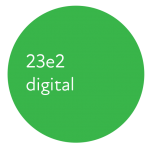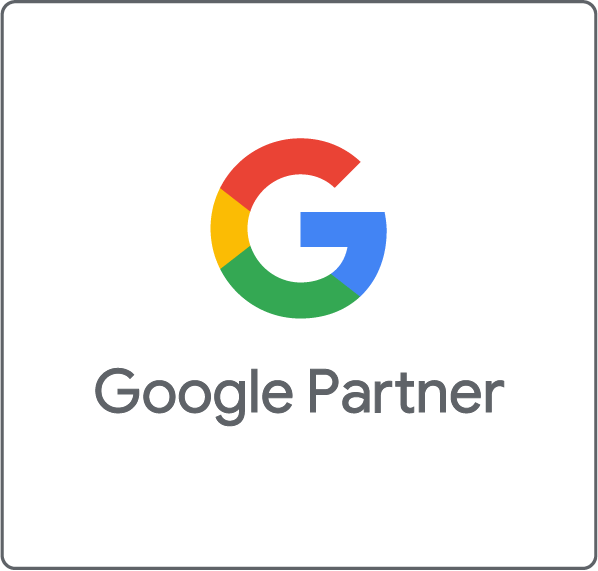© 23e2 Business Services Inc. | Working With 3rd Parties
ROI Formulas for PPC Campaigns

Understanding the financials of your business can boost its long-term profitability.
There was once a time where PPC (pay-per-click) was one of the only methods of paid search advertising. However, with new ad choices including Facebook Ads, Microsoft Ads and social media platforms such as Instagram and Snapchat, the advertising methods have diversified. With this diversification of ads, it has become more important than ever to understand the financial metrics of a business. The financials of your business may seem daunting to understand at first, but learning about it will propel you past competitors in the long-term.
What is ROAS and ROI?
The very first terms that you should familiarize yourself with are ROAS (return on ad spend) and ROI (return on investment). Many people tend to believe that these terms mean the same thing, but that is not the case. When examining ROAS, businesses do not account for the company’s cost of doing business (Cost of goods sold, aka COGS) compared to ROI, which does. Because of this, ROAS views PPC profitability in a straight-forward way, while ROI takes more factors into account. For example, if you were to sell TVs for $100 each with a 20% markup, your ROAS and ROI would differ. Your ROAS would equal the total amount of TVs that you sell times the price (e.g. 10 TVs sold, 10 * 100 = $1000 ROAS), every unit sold would be a $100 profit. On the other hand, your ROI would include the costs to calculate your gross profit, so the calculation would be
ROI = (Unit Price + (Unit Price * Markup) – Unit Price) -> (100 + (100*0.20) – 100)
ROI = 100 + 20 -100 = $20 Gross Profit / Unit
Obviously a $100 profit is significantly more than a $20 one, this illustrates the major difference between ROI and ROAS. Due to limited calculations, buyers typically rely on ROAS when using Google Ads. To determine ROAS, you can also use the following formula:
ROAS = Total Conversion Value / Total Advertising cost
Let’s say one of your clients wanted you to calculate your ROAS over the last month. They say that they have spent $12 500 on Google Ads campaigns which cause them to gain 374 leads. Then 290 leads were sold to attorneys, each lead cost $125. To calculate their conversion value, you would do:
Conv. Value = No. of leads * price per lead -> $125 * 290 = $36 250
Conv Value = $36 250
Now for your ROAS, you would use the following calculation:
ROAS = Conv. Value / Total cost of ads -> 36 250 / 12500 = 2.9 or 290%
ROAS = 2.9 or 290%
This means that their ROAS would be 2.9 or 290%. In simple terms, for every dollar they spent, they got back $2.90 in return.
If you would like to calculate your ROAS on Google Ads, you can select the “(All conv. Value / cost). Otherwise, you can calculate it by hand, following the example above.
1. Calculating your Break-Even ROAS
As indicated in the previous section, having a high ROAS does not mean that you are profiting from your business. You could have a ROAS of 350% but you could still be losing money if you were to calculate your ROI as well. This means that if you are a PPC account manager, it is best to set a break-even ROAS for your clients. The profit margins may differ from client to client, but calculating a standard profit margin can help you determine your client’s break-even ROAS.
To determine break-even ROAS, refer to this formula:
- Break-even ROAS = 1 / Profit Margin
An example using this formula, would be if a customer were to purchase multiple plane tickets, with an average price of $1250. Looking at it from the perspective of an airline agency, the tickets would generate an average revenue of $1250 without considering the other expenses. However, if you take into expenses the revenue is bound to drop. Let’s say that 55% of the revenue were to go into the cost of booking the ticket and another 10% of the revenue was paid off as sales commission, the actual revenue would change tremendously. Calculating the actual profit per ticket would be as follows:
Profit = $1250 – ((1250*0.55)+(1250 *0.10)
Profit = $1250 – 687.5 – 125
Profit = $437.50
You can now calculate your profit margin by dividing your profit by your revenue. In this example:
Profit Margin = Profit/Revenue = 437.5 / 1250 = 0.35 or 35%
Now that we know the profit margin is 0.35, we can determine our break even ROAS:
Break-Even ROAS = 1/ 0.35 = 2.857 or 285.7%
This means that you will need to make about $2.86 for each dollar that you spend on advertising. If you make anything more than this, you will be profiting, but if you’re making less than this then you will be at a loss. To increase your profit margins, you can determine the lifetime values of customers including whether or not they will buy more products, refer their friends (etc…). This will lower your break-even ROAS, making your business even more profitable.
2. Calculating your Cost per Conversion for Forms
When a client submits a form it is treated as a conversion by accounts. However, determining an accurate value for each of your form submissions can be difficult as they do not confirm if your customer is going to make a purchase. To counter this uncertainty, you can determine your true cost per conversion. To determine this, you will need to figure out your average cost per conversion (cost per form submission) and your average form conversion rate (the percentage of forms that become sales.
True Cost per Conversion= Avg. cost per conversion in Google Ads / Form conversion Rate
If we track back to the airplane agency example, we can determine the true cost per conversion. Let’s say that the cost per form submission (cost per conversion) is $25. You also know that you close 12% of all the forms that you receive in Google Ads. To calculate your true average cost per conversion, you would insert the values you have into the formula:
- CPA = $25 per lead / 0.12 close rate = $208.33
This means that your true average cost per conversion is $208.33 based on your close rate of 12%. You can now calculate your ROI using the formula: (profit – cost) / cost. When using the profit per conversion that we previously calculated, the formula would be as follows:
- ROI = (437.50 – 208.33) / 208.33
- ROI = $1.10
This indicates that your ROI is $1.10, meaning that you are making $1.10 for every dollar that you spend on advertising. Your ROI can also be viewed as 210% (100 + 110) Note that your ROI does not solely indicate if you are making or losing money. If your ROI were only $0.80 per each dollar spent on advertising, this does not mean that you are losing money. To determine ways of increasing your ROI, you can examine how you can increase your conversion rate, while dropping your cost per conversion.
3. Calculating your Break-even CPA for Forms
Based on the examples above, we now know that your average CPA is $208.33 and your business is profitable. We may know the average CPA, however we need to find out the highest CPA that you can spend on each form, while remaining profitable. Using numbers from before including your close rate of 12%, your cost per conversion of $25, you can determine that your ads are currently profitable. But if your cost per conversion increased, would you still be profiting? This is what Break-Even CPA (BE CPA) is meant to calculate. To calculate your BE CPA use this formula:
- BE CPA = Average profit per sale * Form conversion rate
Using the information from the previous examples, we know that the average profit per sale is $437.50 and the form conversion rate is 12%. Using these values, we can find out the BE CPA:
- BE CPA = 437.50 * 0.12 = $52.5
This indicates that you can pay up to $52.50 per form, before you begin to lose money. Based on all of the information you have now calculated, we know that each form submission is $25 per form and the ROI is 210%. If you were to increase your bids, you could gain 10% more form submissions at $30 per form. This would drop your ROI, but it would make it less likely for your business to reach the break-even cost per acquisition due to the higher volume.
4. Calculating your break-even CPA for Complex Sales Cycle
Let’s say your business uses a complex sales cycle. This means that there are multiple checkpoints with a lead before making a deal to generate revenue for your business. An example scenario of this is if you were to work for a company that sells a monthly subscription to accounting software for businesses. Their average customer makes $3150 during the length of their subscription. Your PPC campaign sends traffic to the landing page of a free webinar that explains how the software can benefit individuals. However, your campaign only tracks those that register, not taking into account those who actually attend. You know that 35% of those that registered attend the webinar and only 20% of them decide to subscribe to your client’s software. You now want to determine how much you should be paying for a webinar registration from your PPC campaigns (aka your Break-even CPA). To calculate your Break-even CPA, you will need to refer to the following formula:
- BE CPA = (Webinar conversion rate * sales conversion rate) * avg. profit per sale
This formula will determine your actual conversion rate and your break-even CPA for one that registers for the webinar.
- BE CPA = (35% of attendees * 20% of new subscribers) * 3150 avg. sale value
- BE CPA = 220.5
In this scenario, your Break-Even CPA is 220.5 per registrant. This means that if you had 100 registrants, it would cost $220.50 for each registrant and $22 050 in total. You would also expect 35 of them to attend and 20 of them to purchase a software subscription. Knowing that your average customer generates a profit of $3150, you can apply this to the formula:
- Revenue = $3150 avg. sale value * 20 sales = $63 000
- Profit = $63 000 – 22 050 = $40 950
This means that you would make a total profit of $40 950 after costs. In a real-world scenario, it may not be this simple, but this example should give you an idea of how you can apply the break-even CPA formula to your business.

By utilizing the ROAS formulas for your business, you can enhance your PPC campaign.
Scala is a general purpose programming language that supports object oriented and functional programming. Scala was designed based to correct the criticisms of Java. Some of these features are features of functional programming such as scheme, standard ML, and haskell, including currying, immutability, lazy evaluation, and pattern matching.
Using ROAS for your PPC Campaign
Here are a number of ways to use ROAS for your PPC campaign:
- Generating Expectations: by determining an ROAS goal for profitability, it can improve the decision-making and performance of your PPC campaign.
- Budgeting: Determining your ROAS can assist you in setting a suitable budget for your campaign.
- Bid Decisions: By determining your ROAS on different levels of your campaign such as your campaign, ad group and ad topic, you can optimize your bid strategies and determine the best strategies for your PPC campaign.
- E-commerce: With the many tracking tools such as Google Ads and Google Analytics available to businesses online, several shopping cart platforms make it convenient to send conversion data for tracking. This means that you can determine your ROAS simply by using your total revenue divided by your total spend, both of which should be available values on these tracking tools.
- Lead Generation: since lead generation campaigns pay close attention to detail to ROI calculations, this makes it easy for the campaign to reach its ROAS goals.
- Awareness + Other campaigns: You can use the ROAS metric to set goals for your awareness generation, page views and other secondary goals. You will need to determine the value of your returns from your campaigns, but using the sales metrics, this can be achieved.
- Beyond ROAS: ROAS may be an effective benchmark metric, but it can be used to determine other metrics such as customer retention and lifetime value metrics. This can give businesses insights on how they can conduct their campaigns.
Getting familiar with ROAS and the math behind it will benefit your business. By understanding the financials of your company and using the ROAS formulas mentioned in this article, your business will be able to conduct a successful PPC campaign. If you want to learn more about ROAS & how it can benefit your PPC campaign feel free to contact our team at 23e2 Digital Marketing – PPC | Web Design | SEO.

